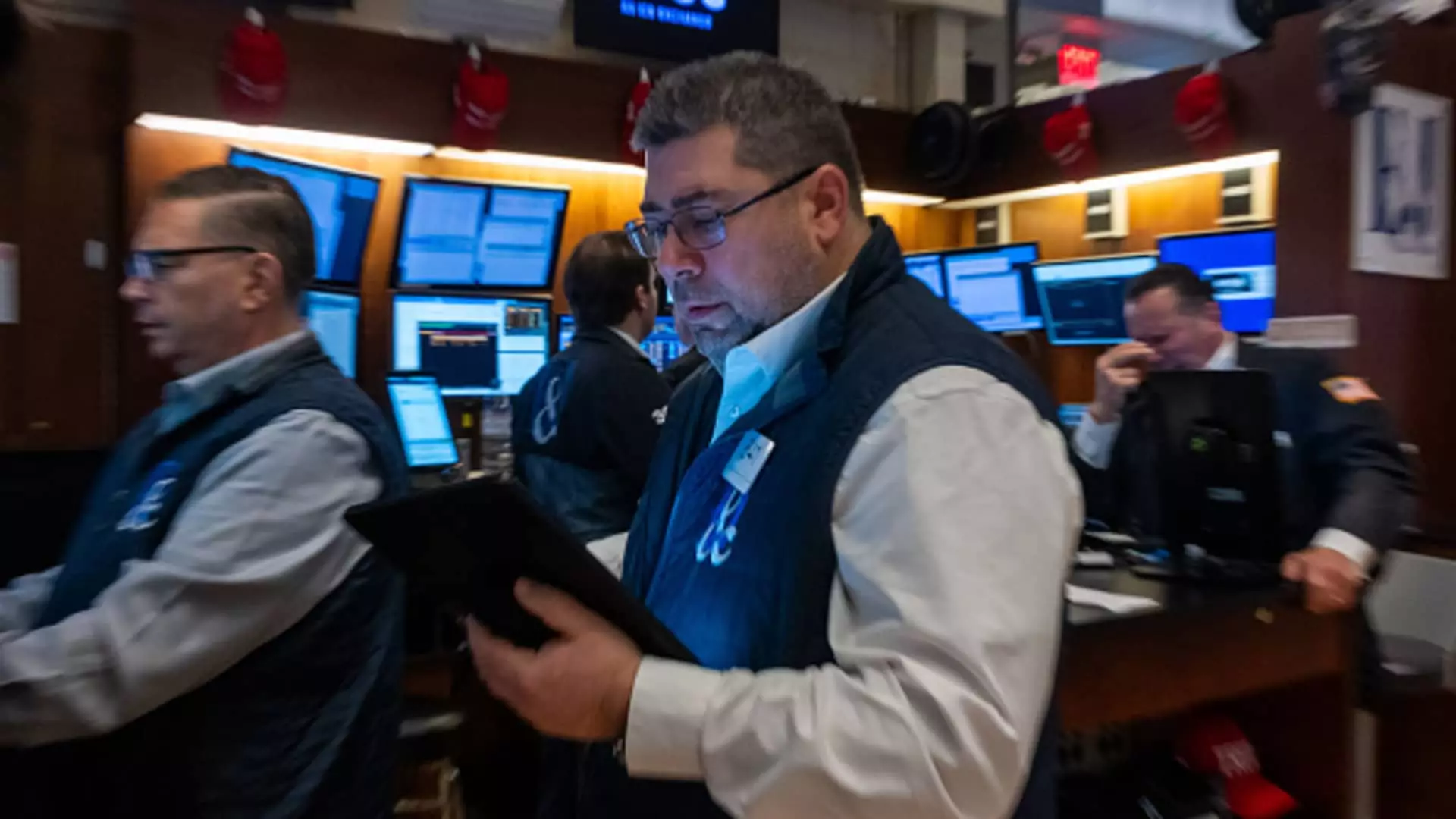In the ever-evolving landscape of financial markets, trading volumes often unveil trends that can inform both seasoned and novice investors. Recently, there has been a noticeable uptick in investors making significant bets on the stock market, primarily through the use of leveraged and inverse ETFs. While these products offer enticing opportunities for short-term gains, they also come with a plethora of risks that merit careful consideration.
Leveraged and inverse ETFs are engineered to amplify the daily returns of underlying indices or stocks. For instance, if the S&P 500 sees a daily increase of 1%, a 2x leveraged ETF is designed to deliver a 2% return. Conversely, if an index falls, the corresponding inverse ETF will gain. This kind of financial engineering has permeated the investment community, attracting a diverse array of investors looking to capitalize on market movements quickly. According to Douglas Yones, CEO of Direxion, this shift can largely be attributed to the increasing prevalence of speculative trading practices across various platforms, ranging from options to cryptocurrency.
These funds have existed since 2006, but it wasn’t until recently that we saw a proliferation of leveraged and inverse single-stock ETFs. This surge reflects an evolving market characterized by volatility, which has prompted retail investors to explore new avenues for expressing their market viewpoints. The rise in assets within these ETFs is not just a fad; it mirrors a broader trend sweeping across global markets, particularly among younger traders who are drawn to the appeal of high-stakes trading via mobile applications.
Understanding how leveraged and inverse ETFs work is crucial for anyone looking to enter this space. The daily resetting mechanism can prove convoluted. For example, holding a 2x leveraged ETF over multiple days may lead investors to realize far less in returns than they initially anticipated, primarily due to the compounding effects of daily resets. Investors are often drawn to these instruments under the assumption that they can amplify returns proportionately; however, market realities may render such expectations misleading.
Consider a simple scenario where an investor puts $100 into a 2x leveraged ETF. If the underlying index rises by 10% one day and falls by 10% the next, the math becomes complicated fast. While one might assume the leveraged position would bring a loss of about 2%, the actual outcome reveals a loss closer to 4%. This disconnect highlights how easily investors can misjudge the potential danger of these investment vehicles, leading to a painful realization when profits do not materialize as expected.
One cannot overlook the significant sociocultural elements at play in this trend. A generational effect underpins the rise of leveraged trading, with younger traders increasingly engaging in these high-risk propositions due to the lowered barriers to entry. The convenience of mobile trading apps simplifies access to these products, facilitating a new wave of retail traders eager to engage in speculative practices previously dominated by institutional investors.
The demographics of ownership also interestingly skew toward retail investors who now make up approximately 75% of users of these ETFs. With platforms accessible across the globe, there’s also a noteworthy influx of international retail investors keen on taking part in the 24-hour trading phenomenon. This growing participation can easily lead to higher market volatility, not just in leveraged instruments but across broader indices.
The impact of leveraged and inverse ETFs extends beyond mere numbers; they influence overall market dynamics. As they morph into a more substantial portion of the trading volume—growing from about 2% of the ETF market in 2016 to nearly 8% today—these products are not only here to stay but are redefining short-term trading strategies. The allure of quick returns in a bull market tends to overshadow the underlying risks, especially when investors are less cognizant of the need for risk management.
Despite their significant traction, financial professionals caution against adopting a buy-and-hold mentality with these funds. Investors must be acutely aware of market behavior and ready to pivot quickly. Even in stable market environments, unexpected downturns can catch leveraged traders off-guard, promoting disastrous outcomes.
As trading volumes continue to swell, driven by enthusiastic participation in leveraged and inverse ETFs, it becomes increasingly clear that understanding the fundamental risks involved must be a priority for all investors. Financial success in today’s fast-paced markets requires a blend of informed strategy and prudent risk assessment. Although these products offer tantalizing potential for gains, they can just as readily lead savvy investors down a perilous path. With this knowledge in hand, market participants can approach the world of leveraged trading with both excitement and caution, remaining ever-vigilant in navigating these complex financial waters.

